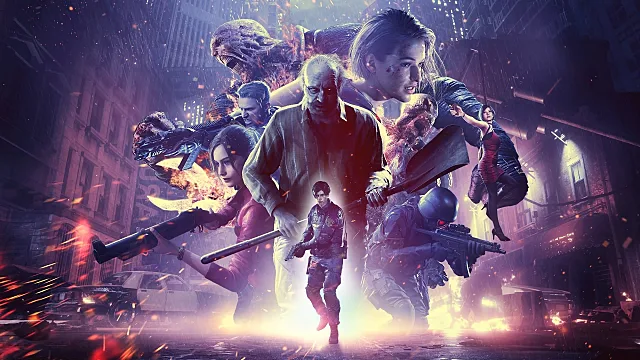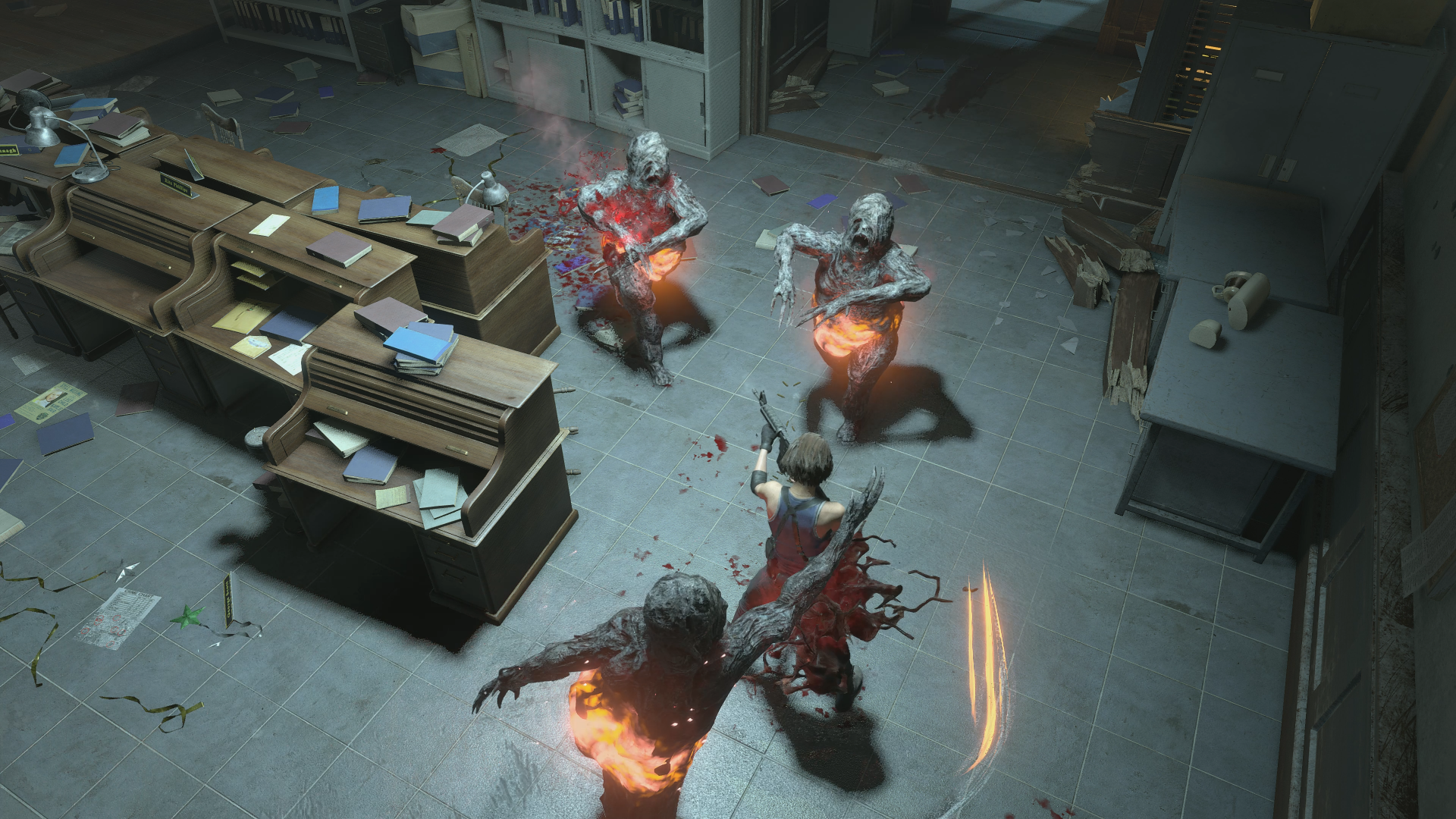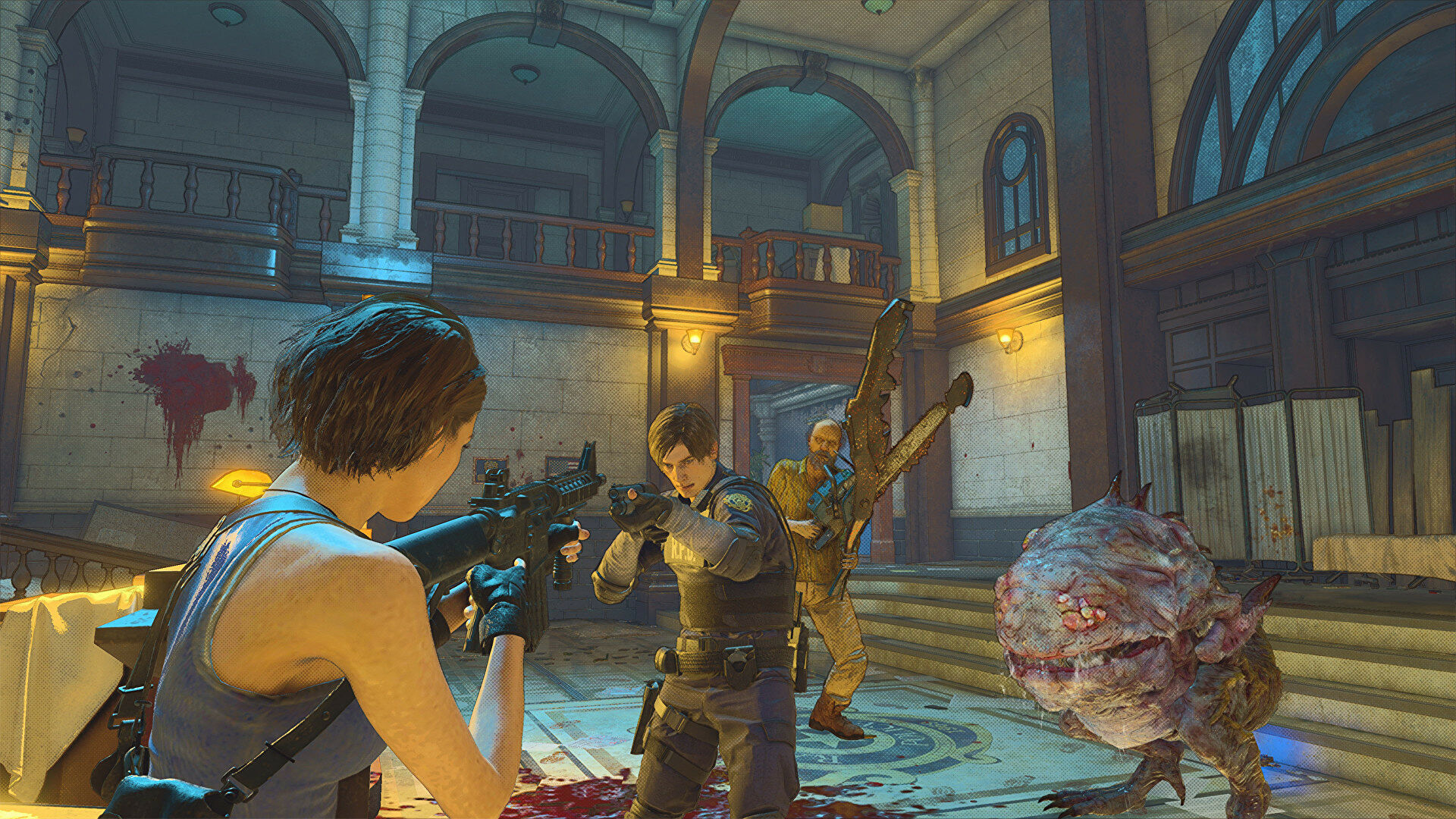I love Resident Evil. Perhaps a little too much. I even find merit in the series’ many wonky attempts at multiplayer. Resident Evil 6 can be an absolute blast in co-op if you have a friend willing to sit through all 20-odd hours of it with you. Resident Evil Re:Verse, however, is not one of those attempts I’ll be returning to despite my near-infinite goodwill for the series.
Resident Evil Re: Verse stems from a sound concept: a competitive multiplayer shooter based on the franchises’ iconic characters and locations — all with a twist. When you die, you resurrect as a zombie and have another go at your opponents. The monster you revive as is random, and they come in tiers, determined by the amount of T-Virus elixirs you collect while still human. There are some heavy hitters here, but they don’t hit very hard.
The combat feels weightless and floaty. Gone is the series’ trademark hefty gunplay, which has been refined to some of the best-in-class for survival horror across recent entries. What shambles out of the darkness is instead an approximation of the mechanics in the Resident Evil 2 and Resident Evil 3 remakes, with the same over-the-shoulder perspective and slowed movement while aiming. Because of that, everything feels uncannily incorrect.
The characters offer some variety in playstyle between them, but only insomuch as their fixed loadouts differ. Leon has a shotgun, Ada her trademark crossbow, and the others an assembly of pistols and semi-automatics with familiar names. Each has a pair of unique abilities, too, which are often a kind of buff or an attack.
You’ve long had to play intentionally while aiming down the sights in a Resident Evil title, but the cursor here just zips about wildly with a mind of its own. It’s imprecise to the point of sheer frustration, and it made me question whether I actually liked the gunplay at all. After once again booting up Village for a test — cue the Principal Skinner meme — it is, in fact, Re:Verse that’s wrong.
It’s no better as the undead, either. You’ll first flail about with an assault rifle as Chris Redfield, then flail about trying to punch people as a Bioweapon. What should be the real strength of the game is janky and half-baked.
The two headliners are the Super Tyrant and Nemesis. Each feels fairly similar to play, and save for their respective abilities of various big punches vs a rocket launcher and some tentacles, they’re of the same size and speed, relying on melee attacks while waiting for their abilities to cool down. They’re not even all that different visually at a glance.
While the Bioweapon characters have definitively more damage output than their human counterparts, the disparity is offset by a constantly draining health bar, meaning no one can reign supreme indefinitely. And it makes sense in an attempt to balance the game, providing you don’t get stunlocked into a corner, which is easily done by pretty much any of the characters spamming a standard attack or a few rockets.
There are no atmospheric changes when the big bads show up, either. There are no music cues, nor is there a change in lighting. It’s simply another player out there somewhere stumbling around trying to make sense of it all. And while it’s reasonable given the game’s pace, the sum of these errors strips any tension out of the experience.
It’s a surreal thing to see characters that haunted you in previous games reduced to buffoons.
The absence of content, too, is so stark as to compare it to a void. At launch, there are only six playable human characters, five monsters, two maps, and one game mode. One. There’s no promised team deathmatch or anything beyond a free-for-all either in Resi 2‘s RPD station or the Baker’s house from Resident Evil 7.
There’s nothing to the stages beyond fan service, the novelty of which falls away almost immediately. Where things could have been interesting — for example, letting you play as members of the Baker family on their homestead or introducing more of William’s G Stage variants for the RPD station — you get the same beige offering at both locations. All the pickups are the same across the stages, too, and there are no interactive environmental elements at play to break up the monotony between them.
Having a battle pass for such a mess, regardless of a promised roadmap, is unfathomable. I can say with some confidence that it will be a road less traveled; only a few days after launch, even with crossplay enabled, it took me around a minute to join a match, and only five other people are required to start one.
Steam Charts paint a more damning picture, one where the total player count a mere four days post-launch is around the 250 mark, with an all-time peak of 2,000. Compare that to Village’s own peak of 15,000 for the launch of the Gold Edition. Even players who own the game seemingly aren’t interested, and more power to them.
You have to wonder why we got this over a co-op addition to mercenaries mode, which by all accounts, people actually like.
Resident Evil Re:Verse Review — The Bottom Line
Pros
- The two stages are well-realized, and it’s fun to see them outside of their original context.
- The matches themselves are mercifully short.
Cons
- The characters handle like steering melting butter around a frying pan.
- You’ll see everything the game has to offer in about 15 minutes.
- And honestly, pretty much everything else.
Had Re:Verse simply been a curiosity accessed from the in-game menu in Village, it would have still been met with a resounding sigh and swiftly forgotten. But following a seemingly pointless 18-month delay, shoehorned microtransactions, and a shockingly sparse amount of content, this low-stakes imitation of the classic series should have been left on the cutting room floor.
It all adds up to a feeling akin to watching a young local band fail at covering a classic song. You almost want to applaud them for trying. Almost.
[Note: The version of Re:Verse included in the reviewer’s purchased version of Resident Evil: Village was used for this review.]













Published: Nov 1, 2022 03:58 pm